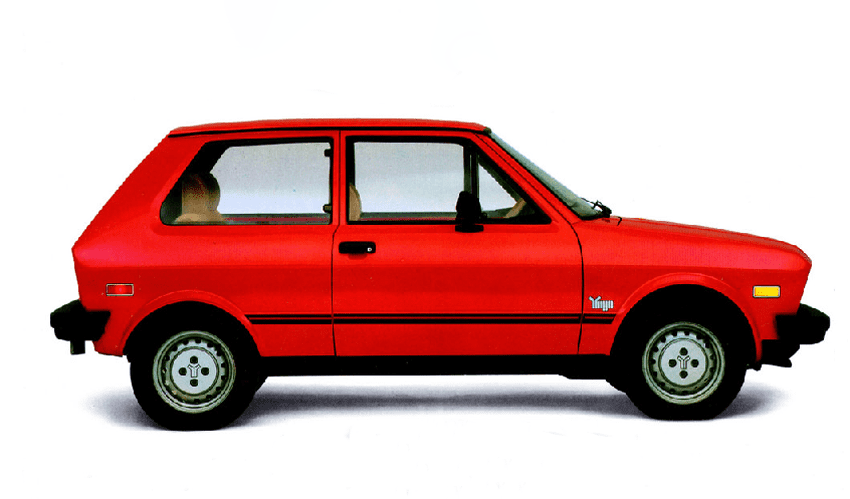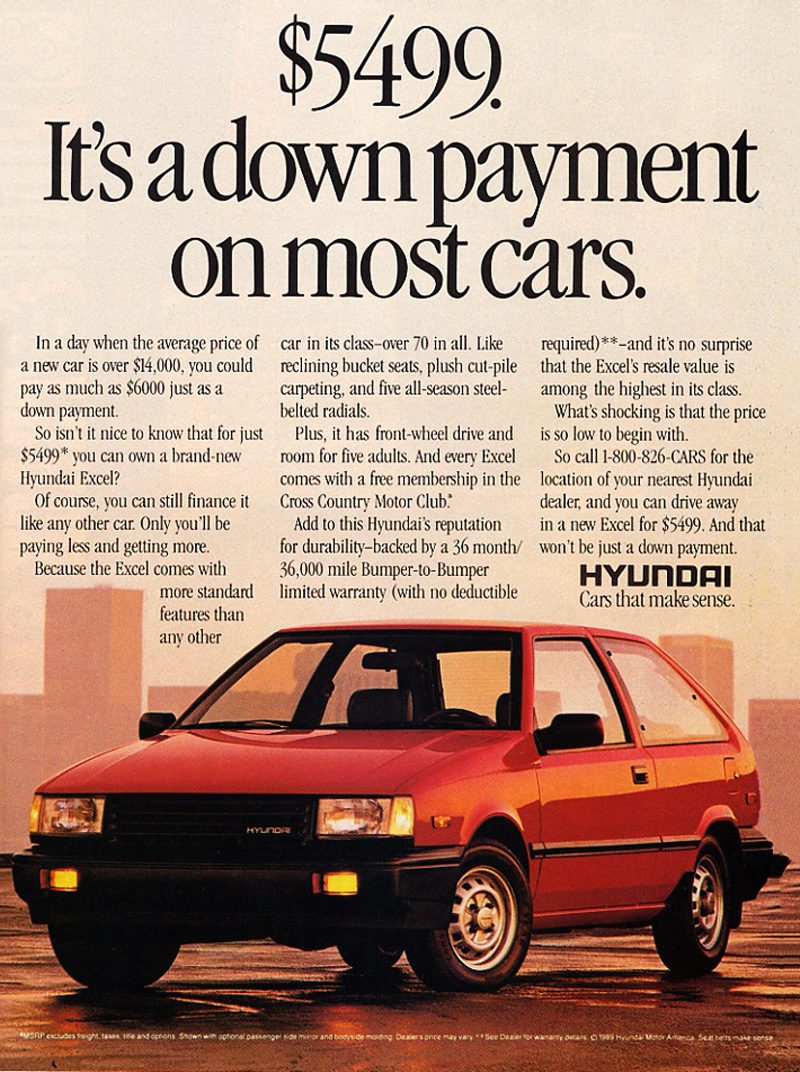
Question
What do you get when you mix serial-entrepreneur Malcolm Bricklin with a generations-old Fiat knockoff built in a dated communist-run factory, with a shoddy U.S. dealer network?
Answer
Yugo. The short-lived, but briefly successful, Yugoslavian car company that came and went more quickly than a seasonal Arby’s menu item.
Yugo: Forgotten Car Brands
Low Price

Famous mostly for their fantastically low advertised starting price, Yugo cars caught the fancy of America’s most miserly motorists, though, as it turned out, a low price was the Soviet-built vehicle’s singular positive quality.
Fiat and Zastava
Available between 1985 and 1992, the 2-door subcompact hatchback was built by Yugoslavian carmaker Zastava under license from Fiat, and was based on the latter’s 127 small car, which dated way back to 1971. In European markets, the American-market Yugo was sold as the Zastava Koral.
Yugo America
Imported and distributed in the U.S. by Yugo America, Inc., Yugo cars were retailed through a thin network of about 300 dealers, all of which were established outlets already selling other brands. Translation: There were no stand-along Yugo dealers.
Yugo in Canada
Yugo also had a minimal presence in Canada, but as Hyundai was already selling the ultra-cheap Pony small car north of the border, Yugo’s bargain price of entry was less of a selling point there.
Federalization
Federalizing the Koral for U.S. sale was reportedly difficult, as the car did not initially meet regulatory requirements for safety or emissions. Headlights, taillights, and side-marker lights, for example, were all modified to meet U.S. Department of Transportation standards. Additionally, a larger engine was developed to meet the expected power demands of American consumers.
And though the Yugo was promised to arrive in the U.S. with “all the novelties”—an actual PR quote–the car itself was starkly bereft of anything that might be perceived as a comfort or convenience feature.
Specs
The Yugo arrived stateside in 1985 with a 55-horsepower 1.1-liter 4-cylinder carbureted engine. The base GV came with manual everything–no audio system or air conditioning–an industrial-grade plastic cabin, and a 4-speed manual transmission. Neither an automatic transmission, nor air conditioning, was available. Still, for the fantastically low $3990 base price, shoppers took notice. This at a time when the average transaction price on a new car had just crested over $10,000.
Sales

Between 1986 and 1987, Yugo retailed more than 80,000 cars in the U.S., and it seemed as Bricklin’s company had built some momentum.
Features and Options
For 1987, the base price of an entry-level GV had risen to $4349, plus a $400 destination charge. Also, a “Comfort and Sound” package ($999) brought with it air conditioning and an AM/FM radio. Plus, a new 1.3-liter base engine raised horsepower output to 64. There was talk at the time of making an automatic transmission available, but one never appeared.
The Tides Turn
By 1988, Yugo’s fortunes had changed. The spunky importer of cheap cars was suddenly faced with headwinds on a number of fronts.
Greedy Dealers
First, dealers grew weary of Yugo’s thin margins. Indeed, a base GV sold at list price netted a dealer less than $200 in gross profit. The lean earnings encouraged dealers to inventory pricier higher-trim-level Yugos, which did bring more revenue, but were not perceived by consumers to be good values. A well-optioned, top-trim-level GVX, for example, might sticker for almost $8000, double the original Yugo asking price. Plus, many Yugo dealers took to adding nonsense fees to the cars in order to boost profits, frustrating would-be customers.
Enter Hyundai

Plus, Hyundai had entered the U.S. market for 1986, and boldly priced its cheapest offering—the subcompact Excel—for just $4999. And, as the Excel could be had with an automatic transmission, it appealed to a much larger audience than the Yugo.
Also, as the Hyundai Excel was based on a more modern Mitsubishi design, it simply presented better to entry-level shoppers than the Yugo.
Yugo Convertible
For whatever reason, Yugo introduced a convertible for the 1990 model year. Dubbed the GVC, the odd offering started at a sobering $8990. Shoppers flat-out rejected the Yugo droptop, and only 500 examples were sold in the U.S. The convertible was dropped from the lineup for 1991.
Bricklin and Yugo America called it quits after 1992. Slowing sales, and a growing reputation for poor quality damned the brand, as did the unlikelihood of keeping its product current with evolving U.S. safety and emissions regulations. And, as we noted earlier, the Yugo dealer body wasn’t as supportive of the product as it might have been.
This aging editor can report having test driven a Yugo GV back in 1987. The car he drove was rather basic, and easy enough to pilot through rush-hour traffic. While the clutch and shifter worked well enough, and the power acceptable, the car was poorly screwed together, and exceedingly noisy. It did handle reasonably well, however.
I specifically recall the climate-control lever which regulated the temperature of air entering the cabin. Though the lever travelled fully six inches between the blue (cold) and red (hot) sides, it was not actually adjustable. Instead, no matter how hard I tried to center it, the lever would snap—aggressively—to one side or the other. Nutshell: There was no adjusting the temperature. You either went with the ambient temperature, or heat. Simple enough, but likely frustrating in spring or fall.
Today, Yugos now are a rare sight. I could locate no examples of the rolling tribute to state-owned manufacturing and collectivism available for sale, though auction records put the value of survivors in the $4000-$5000 range. Which, all things considered, isn’t too bad for a $3990 car. Also, just in case you think you’ve heard the last of Malcolm Bricklin, check this out.

Listen to the Car Stuff Podcast
Yugo Pictures
Click below for enlarged images

